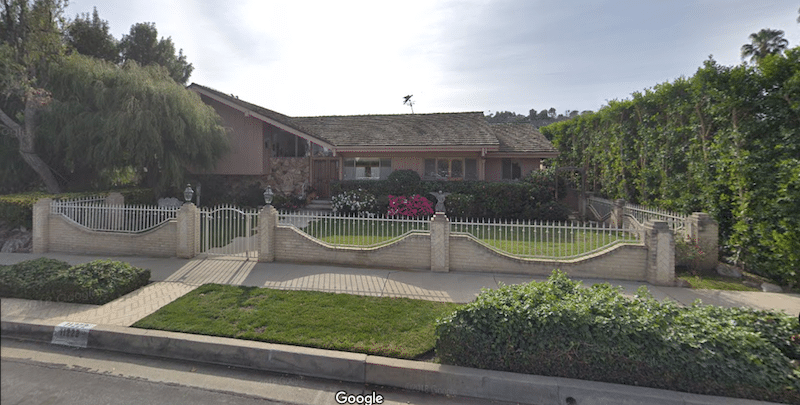
Here’s the story of a lovely family home, that was an icon of heterosexual popular culture, and also represents complex queer histories. That’s right. We’re talking about the Brady Bunch house, which is on the market for $1.885 million. Photo: Google Earth image.
Here’s the story of a lovely family home, that was an icon of heterosexual popular culture, and also represents complex queer histories.
That’s right. We’re talking about the Brady Bunch house, which is on the market for $1.885 million, according to Douglas Elliman Real Estate.
BRADY BUNCH HOUSE
The Traditional-style, 2,477-square foot house was used for exterior establishing shots in the popular television sitcom “The Brady Bunch” (1969–1974) and in numerous sequels and specials into the 1990s.
Although an icon of representations of the American heterosexual blended family of the 1970s, the house also tells a story with a gay subtext, according to Preserving LGBT Historic Sites in California — Actor Robert Reed (1932–1992), who played the character of architect and paterfamilias Mike Brady, was a gay man who kept his sexuality strictly hidden from the public.
ROBERT REED
In an interview with ABC News, actress Florence Henderson, who played Carol, the mother of the Brady clan, remembered Reed.
“Here he was, the perfect father of this wonderful little family, a perfect husband,” she said. “He was an unhappy person … I think had Bob not been forced to live this double life, I think it would have dissipated a lot of that anger and frustration.
“I don’t think ‘The Brady Bunch’ could have existed at that time with the public knowing that Robert Reed was gay,” Henderson said. “I just don’t think they would have bought it.”
HIDDEN GAY IDENTITY
Reed died in 1992. His death certificate lists the cause of death as colon and bladder cancer, with HIV as a significant contributing factor.
Reed had concealed his HIV status from all but a handful of close friends. Reed telephoned Henderson with the news of his terminal illness only a short time before his death. Reed never came out publicly as gay.
The ‘Brady Bunch’ house thus offers an opportunity to recall the homophobia faced by entertainment figures in the 1970s and the career and life strategies they developed in response, according to Preserving LGBT Historic Sites in California.
COMPLEX QUEER HISTORY
The house also calls to mind the silence, shame, and stigma surrounding people with AIDS that was commonplace in American society during the darkest years of the epidemic in the 1980s and 1990s, Preserving LGBT Historic Sites in California says.
In addition, the house enables us to raise questions about the ways some LGBTQ people in the 20th century and beyond participated in creating popular cultural images that erased their own existence and reinforced the exclusion of others like them from social visibility and respect, according to the site.
The “Brady Bunch home” is located at 11222 Dilling St. in the Colfax Meadows neighborhood of Studio City.
The structure was built in 1959, and the exterior from the street remains largely unaltered from the period when the “Brady Bunch” was filmed. One noticeable change is a low brick wall adjacent to the sidewalk.
The house is not protected by landmark status.
